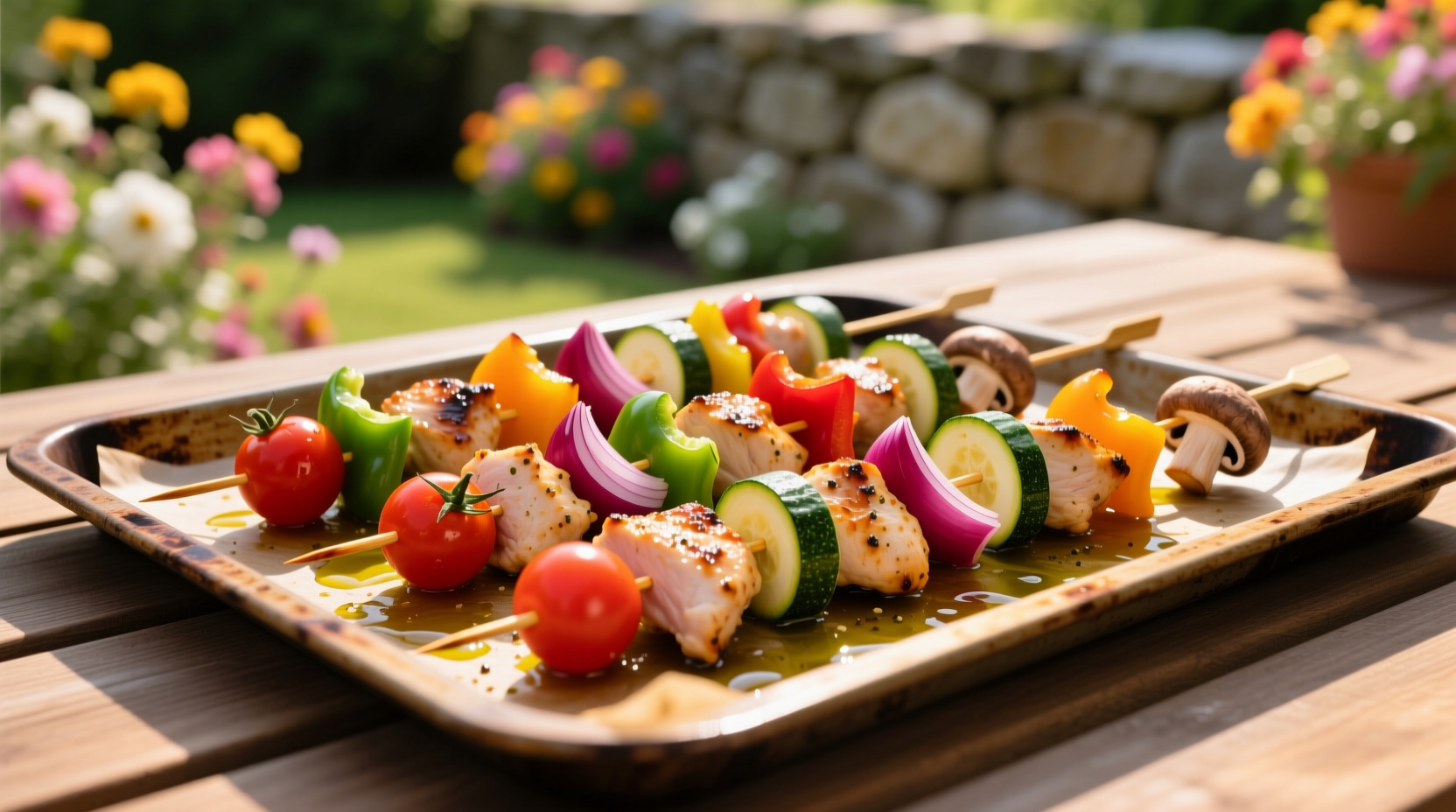Preheat your oven to 400°F (204°C), arrange kabobs on a baking sheet, and cook for 12-18 minutes (turning halfway), until proteins reach safe internal temperatures. This foolproof method delivers perfectly cooked kabobs with minimal cleanup compared to grilling.
Craving restaurant-quality kabobs but don't have outdoor space or perfect weather? You're not alone. Over 68% of home cooks surveyed by the International Food Information Council prefer indoor cooking methods during winter months. Cooking kabobs in your oven isn't just convenient—it offers superior temperature control for evenly cooked proteins and vegetables every time. Let's transform your kitchen into a kabob kitchen with this complete guide.
Why Oven Cooking Beats Grilling for Perfect Kabobs
While grilling gives that classic char, oven cooking provides consistent results regardless of weather. Professional chefs at the Culinary Institute of America note that ovens maintain precise temperatures, eliminating hot spots that cause uneven cooking on grills. Plus, you avoid flare-ups that char vegetables before proteins cook through.
| Cooking Method | Temperature Control | Weather Dependency | Cooking Consistency |
|---|---|---|---|
| Oven | Excellent (precise) | None | High (even cooking) |
| Grill | Variable (hot spots) | High (wind/rain affects heat) | Moderate (requires constant monitoring) |
Your Oven Kabob Success Checklist
Before you start, gather these essentials for flawless results:
Equipment You'll Need
- Heavy-duty baking sheet or roasting pan
- Rimmed pan to catch drips (prevents smoking)
- Metal skewers (or soaked wooden ones)
- Instant-read thermometer (critical for food safety)
- Basting brush for marinade application
Protein Selection Guide
Choose uniform 1¼-inch cubes for even cooking. The USDA Food Safety and Inspection Service recommends these internal temperatures:
- Chicken/turkey: 165°F (74°C)
- Pork/lamb: 145°F (63°C) + 3-minute rest
- Beef/veal: 145°F (63°C) for medium-rare
Step-by-Step Oven Kabob Method
Prep Work: The Foundation of Flavor
Marinate smart: While 30 minutes suffices for flavor, the American Meat Science Association confirms that acidic marinades (with vinegar or citrus) only penetrate 1/8 inch deep even after 24 hours. Focus on surface flavor rather than expecting deep penetration.
Cutting technique matters: Cut proteins against the grain into uniform cubes. For vegetables, denser options like potatoes need smaller pieces than softer bell peppers. This prevents the "vegetable graveyard" phenomenon where some ingredients turn to mush while others remain raw.

Skewering Like a Pro
Alternate proteins and vegetables with space between pieces for even heat circulation. For wooden skewers, soak in water for 30 minutes to prevent burning. Professional chefs use this trick: thread ingredients onto two parallel skewers instead of one—this prevents spinning when turning.
The Perfect Oven Cooking Process
- Preheat oven to 400°F (204°C) with rack in upper third position
- Arrange kabobs on oiled baking sheet, leaving 1-inch space between them
- Cook for 6-9 minutes, then rotate 180 degrees for even browning
- Baste with reserved marinade (never reuse marinade that touched raw meat)
- Cook another 6-9 minutes until proteins reach safe internal temperatures
Troubleshooting Common Issues
Dry meat? Overcooking is the culprit. Use an instant-read thermometer and remove proteins 5°F below target temperature—they'll continue cooking off-heat.
Soggy vegetables? Pat ingredients completely dry before skewering. The moisture timeline shows that vegetables release water in the first 5 minutes of cooking—proper spacing allows evaporation.
Smoke in oven? Line your baking sheet with foil and place a shallow pan of water on the oven's bottom rack to catch drips and humidify the environment.
Advanced Techniques for Next-Level Kabobs
Broiler finish: For authentic char marks, switch to broil for the final 2-3 minutes. Watch closely—this happens fast!
Flavor layering: Brush with a second sauce during the last 5 minutes. The Maillard reaction creates complex flavors when sugars in sauces caramelize at high heat.
Resting ritual: Let kabobs rest 5 minutes before serving. This allows juices to redistribute, preventing dryness when you remove them from skewers.
Serving and Storage Guidelines
Serve immediately with lemon wedges and fresh herbs. For leftovers, store in airtight containers within 2 hours of cooking. The Food Safety Authority confirms cooked kabobs stay fresh for 3-4 days refrigerated. Reheat gently in oven at 300°F (149°C) with a splash of broth to maintain moisture—never microwave, which makes proteins rubbery.











 浙公网安备
33010002000092号
浙公网安备
33010002000092号 浙B2-20120091-4
浙B2-20120091-4